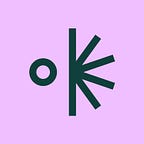What exactly ~is~ Bauhaus anyway?
Expand your design toolkit by understanding design trends, styles, and history. When we say “I like how this looks,” what do we really mean? In this series, learn the history and principles behind your favorite designs.
Up this week: Bauhaus Design.
Say 🟢 hallo 🔺 to rounded curves, balanced asymmetry, simple color schemes, and the art of the abstract.
The Bauhaus style is unique in that it spans disciplines — from graphic design to architecture, furniture design, fine arts and crafts — and after reading this post, it’s a style you’ll be able to point out everywhere.
Let’s take buildings, furniture, and fonts, for example. They often feature rounded corners and sometimes rounded walls. Buildings in particular can sometimes also be characterized by rectangular features, for example protruding balconies with flat, chunky railings facing the street, and long banks of windows. With Bauhaus-style furniture, you’ll often see chrome metal pipes that curve at corners.
But what we’re really here to talk about is graphic design. When it comes to graphics, Bauhaus-inspired styles tend to feature simple geometric shapes like rectangles and spheres, without any elaborate decorations, and fonts are generally sans-serif, and often all lowercase, or all uppercase. There are three key elements that will help you identity (and create!) designs with a Bauhaus-inspired design. Read about them below.
Balanced asymmetry
Balanced asymmetry — where a work strives to achieve visual balance even when elements are not symmetrical — is a key component of Bauhaus Design. The first scene of this template is a good example of balanced asymmetry — the circles aren’t lined up in a perfect row (one is near the top of the design on the left, the other on top bottom right) but it still helps create a visual balance in the design. Imagine if there was just one circle on the left — the scene would look too heavy on the right side with all of the text. The second and third circles balance the text and each other, while avoiding an overly-symmetrical feeling from side to side.
Simple color schemes and abstract shapes
Simple color schemes are another hallmark of Bauhaus designs. “Simple” generally means up to four colors in a design, though there isn’t a hard and fast rule on this. A classic Bauhaus color scheme is a neutral background color with pops of primary colors like blue, red, or yellow.
The templates in Projector that are inspired by the Bauhaus school don’t follow all of the Bauhaus color principles, but you’ll notice characteristics that are clearly drawn from the Bauhaus movement.
This template doesn’t necessarily have a simple color scheme, but does have lots of balanced asymmetry throughout. For a classic Bauhaus color scheme, look no further than this template.
Throughout these templates, you’ll see a focus on simple, abstract shapes like spheres and rectangles. Sharp, crisp angles and straight lines are also a hallmark of Bauhaus design.
But as with anything, it’s also helpful to know what Bauhaus is not: organic, hand drawn shapes, ornate text, and wavy lines.
Bauhaus Design: your very quick history cheat sheet
The Bauhaus (a pioneering art school) was started in 1919, in Weimar, Germany as a progressive new school of thought and design. According to The Met, Bauhaus aimed “to reimagine the material world to reflect the unity of all the arts”. Extending from traditional arts and craft like weaving and pottery and into classical design formats like typography and architecture, Bauhaus became a movement where art, design, architecture and technology came together.
As the world became increasingly modernized and technologically focused, Bauhaus focused on “designing for mass production”. Sleek sans-serif fonts, simple geometric shapes without ornamentation, and architectural styles that favor clean lines, and easily-accessible utilitarian materials like steel, glass, and concrete are all signatures of Bauhaus design. “Form follows function” is a very Bauhaus-influenced idea (Artsy).
From follows function
The simple, clean design of Bauhaus evokes a seriousness and sense of purpose. The “form follows function” ethos can be applied to designs focused on directions, explainers, or other content that simplifies and makes sense of complicated information. On the other hand: designers can get fruitful results from flipping expectations on their heads.
Whether you’re promoting a livestream, pitching a client, or making a class presentation, add some shape to your content with a template from our Bauhaus Collection. Get started for free at projector.com/templates
